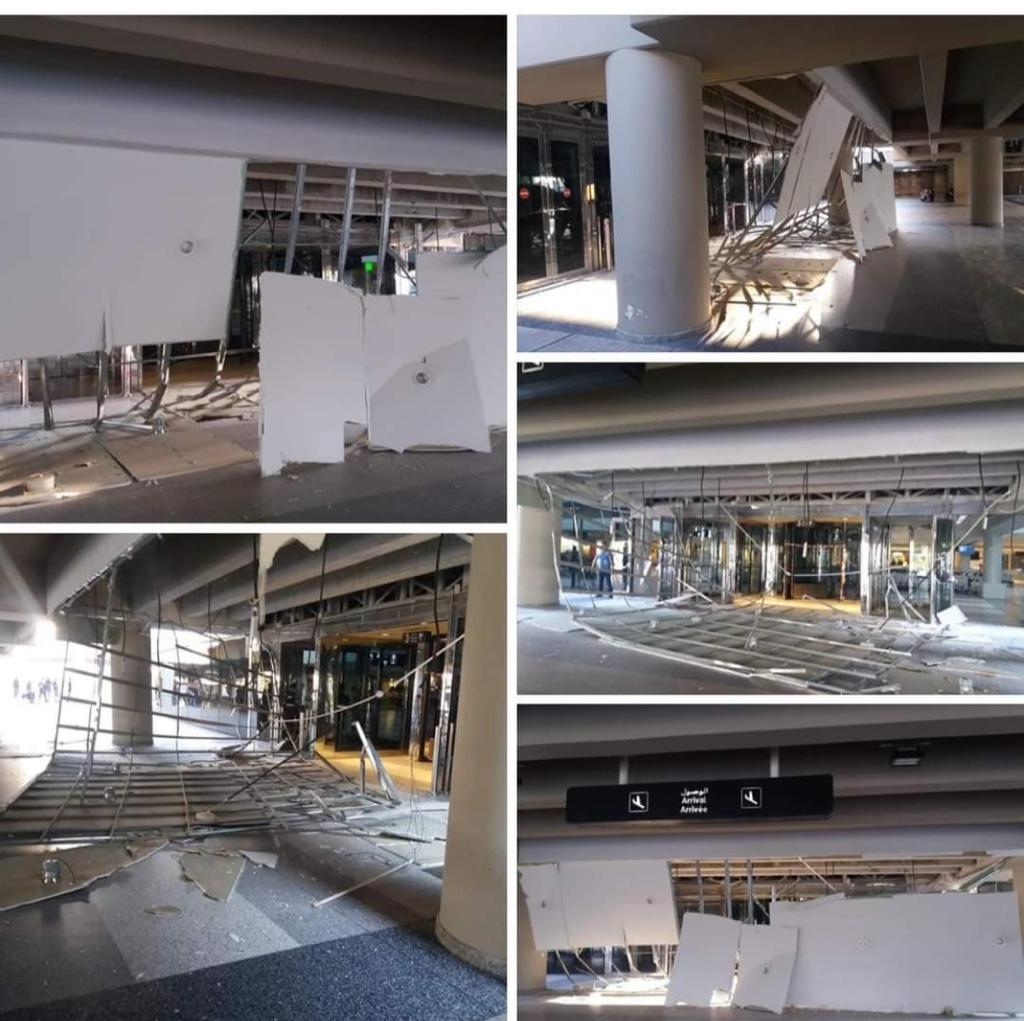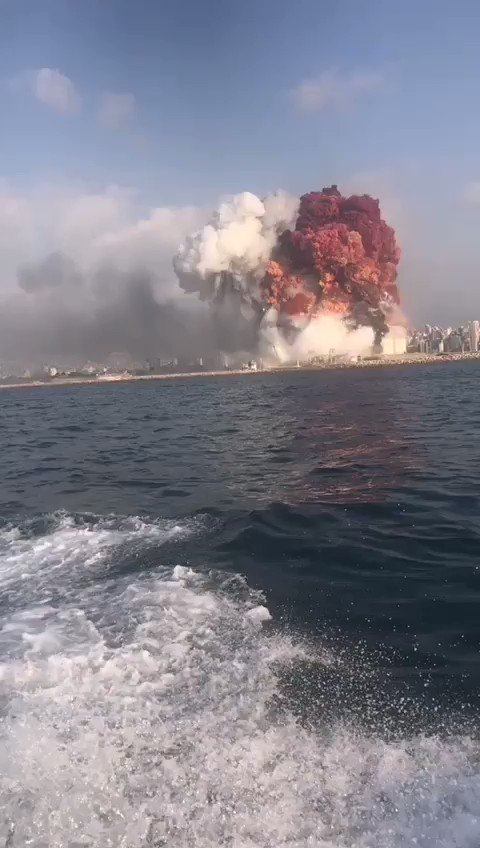Abby Sewell, a freelance journalist, says an overwhelmed hospital in east Beirut is treating people in the parking lot.
Abby Sewell
(@sewella)Hospitals overwhelmed after Beirut explosion. In Geitawi, medical staff treating patients in a parking lot. pic.twitter.com/xwC3eBn49r
Updated
Marwan Abboud, the governor of Beirut, has arrived at the site of the explosion, where he broke down in tears while speaking to reporters.
He tells a Lebanese journalist that he’s there to search for firefighters who were on the site fighting the fire that broke out before the explosion.
“They came to fight the fire, and then they vanished,” he says. “We don’t know where they are. We’re here to look for them.
“This reminds me of what happened in Japan, to Hiroshima and Nagasaki,” he says. “I’ve never seen damage of this size and width, and so catastrophic. This is a national catastrophe. This is a problem for Lebanon, and we don’t know how we’re going to get out of it.
“This is a lot,” he says. “It’s a lot all at once for people…”
صحيفة الخليج
(@alkhaleej)#محافظ_بيروت مروان عبود يبحث عن رجاله وسط ركام الانفجار .. ويبكي من هول الحادث الذي شبهه بما جرى في هوريشيما ونغازاكي#صحيفة_الخليج #لبنان pic.twitter.com/3NfajPtOxl
Lebanon’s interior minister says ammonium nitrate likely caused explosion
Mohamed Fehmi has just told the MTV Lebanon channel the explosion appeared to have been caused by “huge quantities of ammonium nitrate” being stored at the port.
This backs up what the custom’s director-general was quoted as saying to another Lebanese news channel, Al Mayadeen.
Here is some quick analysis from my colleague, Peter Beaumont.
Amid highly conflicting and vague initial explanations over the cause of the Beirut explosion, a few things stand out. Most of the video footage that has been posted on social media, appears to begin with the aftermath of the first of the two explosions.
A tall building is visible in the port area and next to it a fiercely burning fire is occasionally visible through the smoke. Also clear in many of the videos are a series of white flashes just below the main cloud of dark smoke.
One explanation that was quickly given was that these are detonating fireworks from a stored cache being set off by the fire.
Another potential explanation is that this could be ammunition that is being set off and is burning as you would expect to see when ammunition is hit or is being destroyed.
The secondary explosion is more puzzling still. An early explanation was that it involved warehoused nitrates exploding, or other stored “highly explosive material” as claimed by Lebanon’s internal security chief without being more explicit.
One of the most common nitrates in industrial use is ammonium nitrate, used in fertilisers. It is not ordinarily so explosive in its own right.
When it has been used in homemade explosives, by the IRA and Norwegian far right terrorist Anders Breivik among others, it has been mixed with other materials and is often detonated with a small amount of a more conventional explosive.
And slowed down frame by frame, the video on social media shows a second, highly symmetrical blast taking place at ground level all at once, throwing up a wall of dust and then a cloud into the air and tremendous speed. It suggests the release of a huge amount of energy which in turn creates a devastating pressure wave that carries debris over a least a kilometre.
None of which is to say that this is not a terrible accident involving a freak coincidence of circumstances. The 1947 Galveston fire in Texas involved a ship carrying nitrates and a fire that released other materials into a deadly explosive mix that killed over 500 people.
Updated
A doctor at St Joseph’s hospital, less than 2km (1.2 miles) from the blast, said dozens of injured people were being brought for treatment but were unable to be received because the hospital had been destroyed.
“They’re bringing people to the hospital but we can’t treat them,” he said. “They’re leaving them outside in the street. The hospital is broken, the ER is broken.”
My colleague in the city, Martin Chulov, has just sent me the below in an email:
The streets of East Beirut lay in apocalyptic ruin even four kilometres from the epicentre of the blast. Every building in between had lost some if not all of its windows. Huge shards of glass covered roads, some jagged pieces had ripped through cars. Trees were shredded, and pools of blood were commonplace. Blood trails lead to cars, and motorbikes that had sped the injured away to clinics or hospitals that could not cope with the dead and maimed.
Walking down through the east Beirut suburb of Ashrafiyeh to Gemmayze and towards the port, the devastation was even more comprehensive. Dozens of buildings had clearly suffered structural damage. Weeks of sustained artillery shelling could surely not cause the same amount of ruin.
Men, women and children walked bewildered from somewhere near ground zero. Few were hurrying. Few could get past the debris if they tried. It takes a lot to shake Beirut, which has risen and fallen under bombs before. But in a city inured to explosions, this was something new.


















